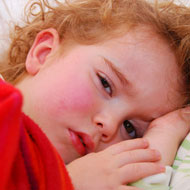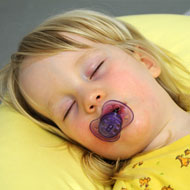- Toddler Measles Symptoms
- Toddler Flu Treatment
- Toddler Flu Symptoms
- Toddler Stomach Flu Symptoms
- Toddler Hair Loss
- Toddler Urinary Tract Infection Symptoms
- Toddler Tonsillectomy Recovery
- Toddler Periorbital Cellulitis
- Toddler Vomiting and Diarrhea
- Types of Toddler Vomiting
- Toddler Vomiting Treatment
- Toddler Cough Vomit
- Toddler Dandruff
- Toddler Bowlegs
- Toddler Eye Infection
- Toddler Pink Eye
- Toddler Pink Eye Symptoms
- Toddler Eye Problems
- Toddler Hearing Loss Signs
- Symptoms Of Pinworms In Toddlers
- Toddler Blood Infection
- Toddler Mononucleosis
- Toddler Motion Sickness
- Toddler Labial Adhesion
- Lyumphoma in Toddlers
- Toddler Scabies
- Toddler Pinworms
- Toddler Insect Bites
- Toddler Meningitis
- Toddler Moles
- Toddler Lyme Disease
- Toddler Nosebleeds
- Toddler Ingrown Toenail
- Toddler Lead Poisoning
- Toddler Hair Loss Alopecia Areata
- Toddler Heat Stroke
- Toddler Rubella
- Toddler Tonsillectomy
- Toddler Iron-Deficiency Anemia
- Toddler Tooth Discoloration
- Toddler Concussion
- Toddler Psoriasis
- Toddler Sunburn
- Toddler Tongue Blisters
- Toddler Impetigo
- Toddler Blepharitis
- Toddler Burns
- Toddler Burn Treatment
- Toddler Eczema Face
- Toddler Eczema Symptoms
- Toddler Urinary Tract Infection
- Toddler Boy Urinary Tract Infection
- Toddler Epilepsy
- Toddler Epilepsy Symptoms
- Toddler Walking Pneumonia
- Toddler Yeast Infection Symptoms
- Toddler Frostbite
- Toddler Hand Foot And Mouth Disease
- Toddler Dry Scalp
- Toddler Dry Skin
- Toddler Strep Throat
- Toddler Strep Throat Symptoms
- Toddler Sore Throat
- Toddler Mumps
- Toddler Bacterial Infection
- Shaken Baby Syndrome
- Shaken Baby Syndrome Symptoms
- Toddler Tonsillitis
- Toddler Eye Discharge
- Toddler Fifth Disease
- Toddler Food Poisoning
- Toddler Gingivostomatitis
- Toddler Stomach Ache
- Toddler Warts
- Toddler Tuberculosis
- Toddler Torticollis
- Toddler Tick Bites
- Toddler Ear Infection Remedies
- Toddler Ear Infection Symptoms
- Toddler Ear Infection Signs
- Toddler Concussion Signs
- Toddler Bronchitis
- Toddler Colds
- Toddler Chicken Pox
- Toddler Appendicitis
- Toddler Asthma
- Toddler Birthmarks
- Toddler Strabismus
- Toddler Wheezing
- Toddler Sprains
- Toddlers Tinea Versicolor
- Toddler Viral Infection
- Toddler Yeast Infection
- Toddler Hives
- Toddler Canker Sores
Causes Of Febrile Seizures In Toddlers & Their Remedies
Febrile seizure refers to a convulsion in the body of a child caused by a fever. Typically, the child's body twitches for a few seconds to a few minutes during the seizure. In a few cases, the child may lose consciousness during the convulsion.
In a few serious cases, the child may also vomit, become breathless and lose bladder control. Usually, children below the age of 5 years suffer from this problem. Though the seizure lasts only for a few minutes, it can be quite distressing for parents to see their child suffer from it.
The convulsion does not necessarily occur when the body temperature is at its peak; in most cases the seizure occurs in the first day of the fever itself and in a few others also while the fever is declining.
Reasons for Febrile Seizures in Toddlers
The reason behind febrile seizures in toddlers is the inflammation of the lymph nodes in the neck caused by a viral infection and, less commonly, the irregular activity of the brain cells resulting in abnormal nervous impulses sent to the spinal cord. It has been observed that toddlers suffer from this problem after immunization with DTP or MMR vaccination. Toddler febrile seizures are also believed to be partly hereditary in nature. It is advisable that you consult a doctor if your child has suffered from a seizure. You must call for an ambulance if the seizure lasts for more than 10 minutes. Chances of recurrence of the seizure are high if the child has suffers from it the first time while s/he has a mild fever, if the duration of the seizure is short or if there is a family history of such cases. In most cases, febrile seizures do not cause any lasting damage to the brain or the spinal cord and are not the sign of epilepsy.
However, only a doctor can diagnose the exact reason behind the problem.
Remedies for Febrile Seizures in Toddlers
There are a few measures that you should take to comfort your child when s/he has such a seizure. Lay your child on the floor on one side of his/her body. Loosen his/her clothing in order to facilitate easier breathing. It is best not to panic or to attempt to hold the child tight to prevent the convulsive body movements. Under no circumstances should you try to put anything into the child's mouth even you see him/her salivating or throwing up. In addition, keep a tab on how long the seizure lasts.


